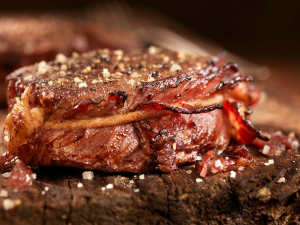With so many varieties of wine hailing from some of the best vineyards in the country, it can certainly be a challenge to find your favorite or know what to pair with your meal. To simplify the process, here is a glossary of terms concerning white wines that will help you make the best choice.
Herbaceous
While not a term you might associate with wine, herbaceous flavors signify those earthy “green” aromas you might associate with freshness and warmth. Scents of warm grass, bell pepper, and even jalapeno grace the bottles of certain white wines. These include the popular Sauvignon blanc, Erbaluce, and Vermentino, among others.
To pair these wines, take your cue from the major aromas. In other words, an herbaceous wine pairs well with green herbs. Focus on dishes that feature rosemary, cilantro, mint, or basil. As with most white wines, you should avoid red meats. With herbaceous wines, chicken, pork, and some seafood work well.
Light and Zesty
The perky flavors in these wines create a light-bodied wine with a fresh aroma and taste. These wines will be dry and lack the fruity sweetness of other white wines. Chenin Blanc, Pinot Grigio (or Gris in France), Muscadet, and Verdicchio are some of the most common zesty wines that you will encounter.
When pairing a zesty wine, the citrus flavors can often stand out very strongly. Because of this, you’ll want to avoid foods with too much sweetness, since this can over-enhance the tanginess of the wine. Instead, focus on fish and seafood, especially in a pasta dish. Octopus, clams, and even fried fish and chips are ideal pairings for a light and zesty wine, as the lemony notes complement the seafood.
Bold and Dry
These wines are inundated with lots of powerful flavors. Though dry, they can often contain creamy notes of vanilla or butter due to the oak-barrel aged process. Wines like Chardonnay, White Rioja, and Semillon fall into this category.
Because of the strong flavors and aromas these wines boast, take care to pair with extremely mild foods. An inoffensive Brie allows the flavors to shine through, as do cream- or butter-based sauces. When choosing a dish, go light on the meat and heavy on the texture. For example, a creamy prawn pasta will enhance the buttery flavors of the wine, and a rich vegetable risotto will bring out the buttery notes.
Light and Sweet
A light and sweet wine will be ever so slightly sweeter than a dry wine but still, be lighter-bodied. These wines appeal to people who don’t prefer dry wines but don’t want to overpower their palette or their meal. Moscato and Riesling will be the most common and popular of the light and sweet varieties. Riesling features more a more fruity flavor with a touch of bitterness, while Moscato is much sweeter and boasts lovely floral and spiced notes.
Unlike most white wines, the light and sweet varieties pair well with spicy dishes. This is because they generally have a lower alcohol content, and also because the sweetness counteracts the spice of the dish. If you love spicy cuisines like Mexican, Thai, or Korean, this is one of the few white wines that will work well. Moscato, especially, works well with charcuterie.
Bold and Sweet
Our final type of white wine, the bold and sweet wines are just as they sound – full of flavor and sweeter than most wines. Look for ice wine, sherry, Madeira, or white port to experience a punch of flavor and sweetness.
Because they are so sweet, these wines go very well with desserts and chocolate. An ice wine will pair wonderfully with cheesecake, ice cream, and hard cheeses. Meanwhile, a white port accompanies chocolate desserts that are richer in flavor. If you’d like sweet wine to accompany a meal instead of dessert, foods with strong flavors will stand up well to the strong flavors. Rich or salty dishes go especially well, so choose salty fish dishes or pate.
Conclusion
Choosing a white wine is much easier when you know what you prefer, what you want, and what you’re eating. For a fantastic array of white wines – and incredible seafood dishes to accompany them – check out Abbey Road Pub.


 Who Supplies This Seafood Restaurant
Who Supplies This Seafood Restaurant Local Farm To Table Virginia Beach Seafood Is The Only Way
Local Farm To Table Virginia Beach Seafood Is The Only Way